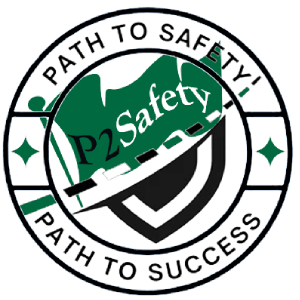CIT 25 Flashcards

1. Declarative knowledge
Declarative knowledge refers to facts or information stored in the memory that is considered static in nature. Declarative knowledge, also referred to as verbal or factual knowledge, describes things, events, or processes; their attributes; and their relation to each other. It is contrary to procedural or implicit knowledge, which refers to the knowledge of how to perform or operate.

2. Assertive communication style
A person using this style is confident in their convictions but makes sure that they do not belittle or steamroll others in the conversation

3. Aggressive communication style
This communication style can be hostile, threatening, and comes from a place of wanting to win at all costs. An aggressive communicator behaves as if their contribution to the conversation is more important than anyone else, and the content of their message is often lost because of the tone of their delivery.

4. Nonverbal communication
Nonverbal communication encompasses a whole host of physicalized nonverbal cues that convey emotional states and complement verbal messages. Nonverbal human communication involves many different parts of the body and can be either conscious or subconscious on the part of the communicator.

5. Verbal Communication
Verbal communication is interpersonal communication that includes oral communication, written communication, and sign language. Verbal communication relies on words to convey meaning between two or more people

6. Avoiding – A conflict resolution strategies
This method involves simply ignoring that there may be a conflict. People tend to avoid conflict when they don’t want to engage in it. Avoiding allows them to ignore that there is a problem.

7. Accommodating – A conflict resolution strategies
This strategy, also known as smoothing, involves one party acquiescing, giving the opposing party exactly what it needs to resolve the problem. This method allows you to resolve a problem in the short-term while working toward a long-term solution.

8. The ADDIE Model
The ADDIE model is one of many approaches used by instructional designers and content developers when creating instructional course materials (see also Instructional Systems Design). ADDIE is a five-phase process; each phase can take place sequentially or concurrently. The five phases include analysis, design, development, implementation and evaluation. Also see Rapid Application Development.

9. Competency models
Competency models are frameworks for defining the skill and knowledge requirements of a job. They arrange knowledge and skill requirements into categories, such as personal effectiveness and academic, technical, industrial, occupational, management and workplace competencies

10. Conscious Incompetence
Conscious Incompetence In the Four Stages of Competence Model, conscious incompetence is the second stage, in which the learner is aware of a skill or knowledge gap and understands the importance of acquiring the new skill.

11. Passive communication style
This type of communication is also known as the submissive communication style. Another way of describing it is the “people-pleaser” type. This type of communication is self-effacing, conflict-avoidant, and easy-going.

12. Conflict Resolution Strategy Avoiding
This method involves simply ignoring that there may be a conflict. People tend to avoid conflict when they don’t want to engage in it. Avoiding allows them to ignore that there is a problem

13. Conflict Resolution Strategy Competing
Competing is an uncooperative, overly assertive method used by people who insist on winning the dispute at all costs. It’s known as a win-lose strategy. This method is not often identified as bringing satisfactory resolutions, as it doesn’t allow for collaborative problem-solving.

14. Information Literacy
Information Literacy: The ability to locate, evaluate and use/apply information

15. Media literacy
Sources define media literacy as the ability to access, evaluate, analyse, or create media in various forms. Media literacy helps people digest the news, ascertain legit news from fake news, and digest the information.

16. Technological digital literacy
Technological digital literacy involves proficiency in using digital devices (smartphones, laptops, tablets) to access the Internet to discover, create, review, evaluate, and use information via different digital platforms.

17. Technology literacy
Technology literacy is the ability to use, comprehend, manage, and analyse technology safely, effectively, and responsibly. This literacy includes using technology to evaluate, create and integrate information

18. The ADDIE Model - Development
During the design phase, you did a lot of the hard work in creating your course. You outlined the flow of information and identified the content and resources you need.

19. The ADDIE Model - Design
With those basic pieces in place, you're ready to move into the design phase. This is when you'll start to map out the basic flow and feel of whatever instructional material you're working on (for example, your course) and start to pull together content, graphics, and more.

20. Compromising
This strategy, also known as reconciling, seeks a mutual agreement to settle a dispute. It’s known as a lose-lose strategy since both parties willingly forfeit some of their needs in the interest of reaching an agreement.

21. Collaborating
Like the compromising method, collaboration involves working with the other party to find a mutually agreeable solution to a problem. It’s known as a win-win strategy. For example, a salesperson and client may work together to negotiate contract terms until both parties find it agreeable.

22. Accommodating
This strategy, also known as smoothing, involves one party acquiescing, giving the opposing party exactly what it needs to resolve the problem. This method allows you to resolve a problem in the short-term while working toward a long-term solution

23. Disability
Disability is the experience of any condition that makes it more difficult for a person to do certain activities or have equitable access within a given society.

24. Type of Disabilities
Disabilities may be cognitive, developmental, intellectual, mental, physical, sensory, or a combination of multiple factors.

25. Intellectual disability (ID)
Intellectual disability (ID), also known as general learning disability in the United Kingdom and formerly mental retardation, is a generalized neurodevelopmental disorder characterized by significantly impaired intellectual and adaptive functioning.

26. Adaptive behaviour
Adaptive behaviour is behaviour that enables a person (usually used in the context of children) to cope in their environment with greatest success and least conflict with others. This is a term used in the areas of psychology and special education.

27. Life skills
Life skills are abilities for adaptive and positive behaviour that enable humans to deal effectively with the demands and challenges of life.[1] This concept is also termed as psychosocial competency.




